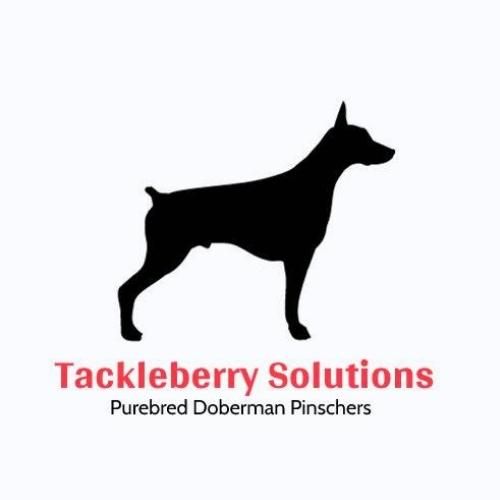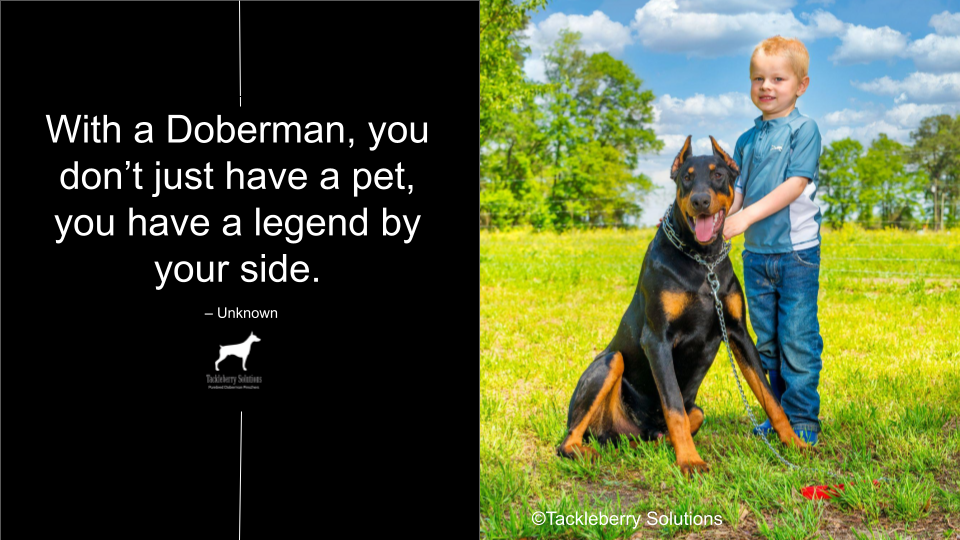In school, we all learn stranger safety. But our education never really covers canine safety and the associated manners that are important to go with it.
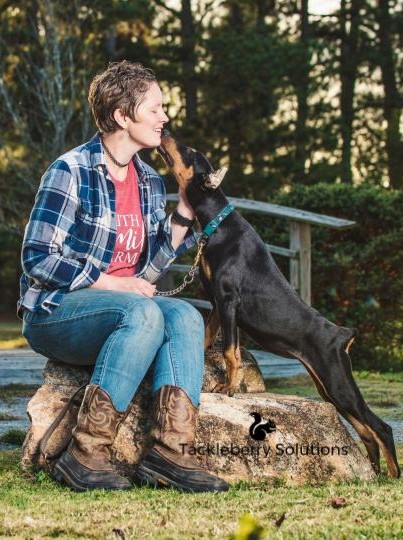
Hello, my name is Amy Arthur. I breed, train, and sell, purebred Doberman Pinscher puppies for service or protection work and as excellent quality family pets. Our dogs are personality tested and certified under Tackleberry Solutions and recommended for specific tasks depending upon their individual score results.
Disclaimer: This article is written as an opinion piece only and is not to be taken as fact, legal or medical advice. Your results are in no way guaranteed and will depend on several factors including your willingness to plan ahead, study and train.
Mind Your Manners: A service dog is not a pet
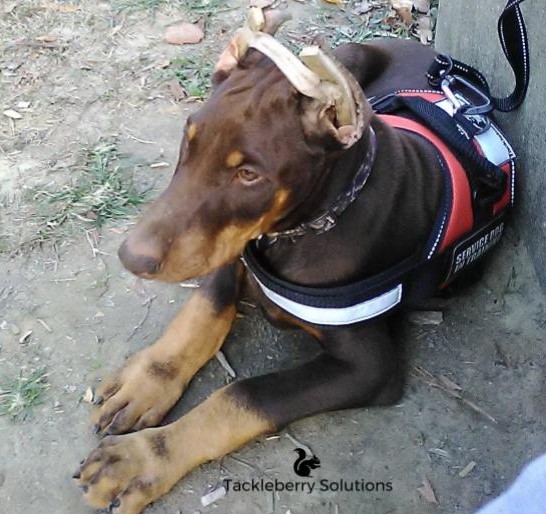
We know service dogs are working dogs; but what are the dos and don'ts when encountering these specialty teams out-and-about?
Remember the dog is on the job. Be mindful; a service dog doesn't have to wear a vest. Even unvested, a service dog is still working, and still legitimate.
Or maybe you're a handler of a service dog; what can you honestly expect as respect from the public? And what might be the reoccurring … annoyances… you’d encounter? - If this is you, feel free to share your experiences in the comments below.
Important Manners #1 - Do Not Distract
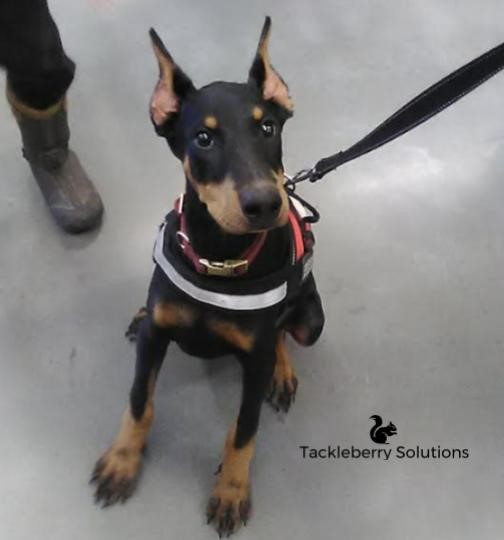
First of all, while it might be hard to resist interacting with the fluffy four-legged buddy, don't do it.
*Much of this list will come back to one main point on manners around a service canine: do not distract the dog.
Distracting a service dog in any way breaks the dog's undivided attention towards their handler. This pause in their attention could cause the dog to miss little cues which are important for the dog's job.
Further reading: Popular Therapy Dog Breeds: Which One is for You?
Side note: Throughout the course of this article, I'll use the term "service dog" loosely. This is to say that I'm not just talking about emotional therapy canines or dogs that help with disabilities, but also protection canines and any other type of dog that's on the job as well.
Important Manners #2 - Do Not Touch
Second, many handlers of service dogs will put "No Touch," "No Talk," "No Eye-contact" patches on their dogs' vests.
Despite that, many will say these same patches may as well be invisible. Don’t touch what’s not yours. Petting or touching a service dog without asking is bad manners and utterly disrupts their concentration. This pulls them off their job and risks the safety and wellness of their person.
Furthermore, this could be dangerous. Not all service canines are trained to be friendly and each canine's temperament is different.
Side note: There may be some occasions where petting a service dog is accepted. Such as times when the handler is trying to socialize their canine in order to build up confidence and prevent fearful aggression. So, while it is bad manners to pet without asking, it is ok to ask permission. - At a minimum, ask permission from their handler to interact with the service dog. And please, respect the "No" if that’s the answer.
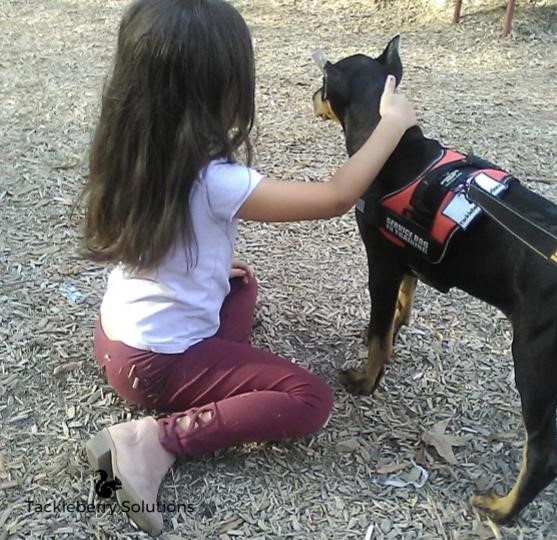
Important Manners #3: Give Service Teams Right of Way
Third, while service dogs are highly trained to ignore distractions, they’re not robots. Why make their jobs more stressful? Keep your distance. Let them go first.
This should hold true for pets as well. More important for service dogs who are tasked with their personal wellbeing.
Important Manners #4: Do Not Introduce your dog to a service dog
In short, beyond the basic manners of not letting your dog play while on leash; you should never allow your dog to interact with a service dog.
Firstly, this is a huge distraction. Second, it puts both dogs at risk. And might heighten the protection instinct if their person is feeling threatened.
To expound further, service dogs are expensive, with immense amount of work and time put into their training. You are potentially putting that canine in danger by introducing your dog. (Not every canine is friendly towards other dogs.) Consequently, you may have just started a dog fight.
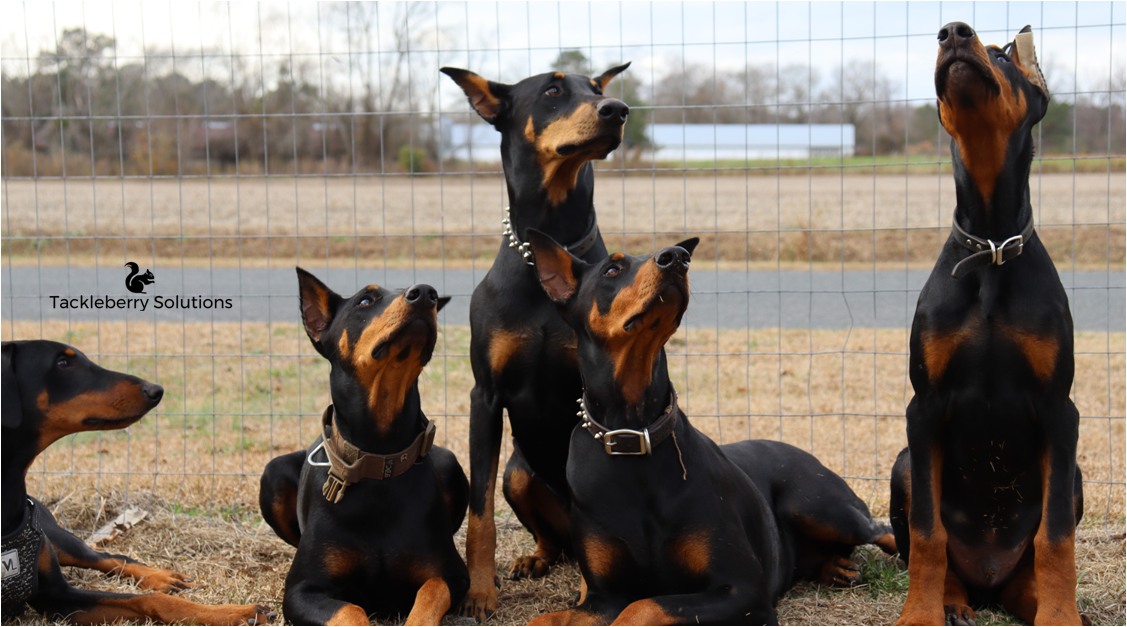
Important Manners #5: Do Not Treat a Service Dog
Next, never give praise or treats to a working dog. Especially without the handler's permission. You don't know the dog's training and we can all agree that hotdog-pup-acheeno is a distraction.
Important Manners #6: Do Not Ask Personal Questions
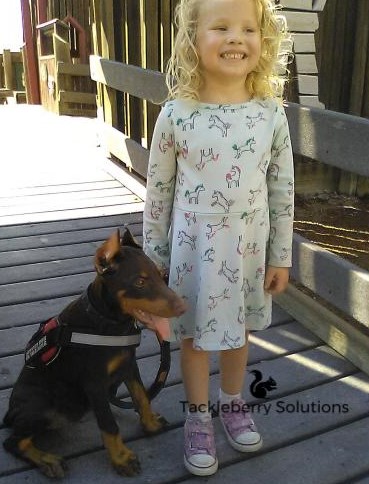
Yes, you and or your child might be curious why a person has a service dog. What might be visible, may not be the reason. And if just because an individual's need for a service dog isn't clear, it still is not your business.
Hopefully, you wouldn't walk up to a stranger and ask personal questions. The same manners apply here.
Most importantly, avoid questions such as:
- Why do you Need a service dog?
- What does the dog do for you?
- Why is your dog allowed to be here?
Business owners are only allowed to ask two questions:
- Is the dog required because if a disability?
- What work or tasks is the dog trained to preform?
Side note: (I don't know if this applies true in all States.) But the handler is never required to disclose the disability.
Important Manners #7: Dont Assume a dog is off-duty
Seventh, service dog teams (handler and canine both) are on the job. That's why, if you must talk with the handler, ignore the dog.
Albeit, we all have days where we like to be chatty and interact. And days where we’d love to be just left alone.
Furthermore, imagine how often service teams have extra stimulation from unintendedly rude engagement: pointing, staring, gawking, questions. This can be overwhelming and overloading to the team.
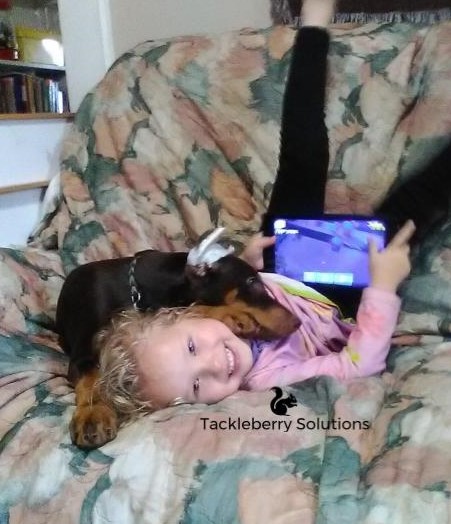
Similarly, if you see a dog lounging, napping, resting, don't assume they're off duty or that you can freely engage with them. A resting dog can still be ready and working to help their handler. This is their job, their duty, and what they are trained to do.
Important Manners #8: Do Not assume service dogs only work
Inversely, some people mistakenly feel sad for working dogs, thinking that they never get to be dogs and frolic like their non-working pets.
Side note: If your pet does not have a job or two, you might be missing out on their stimulation!
While a service dog is on call to help their person, and while all dogs thrive when they have jobs, they are given downtime. This work isn't cruelty; they do get to dog-around and run and frolic as any healthy happy pup!
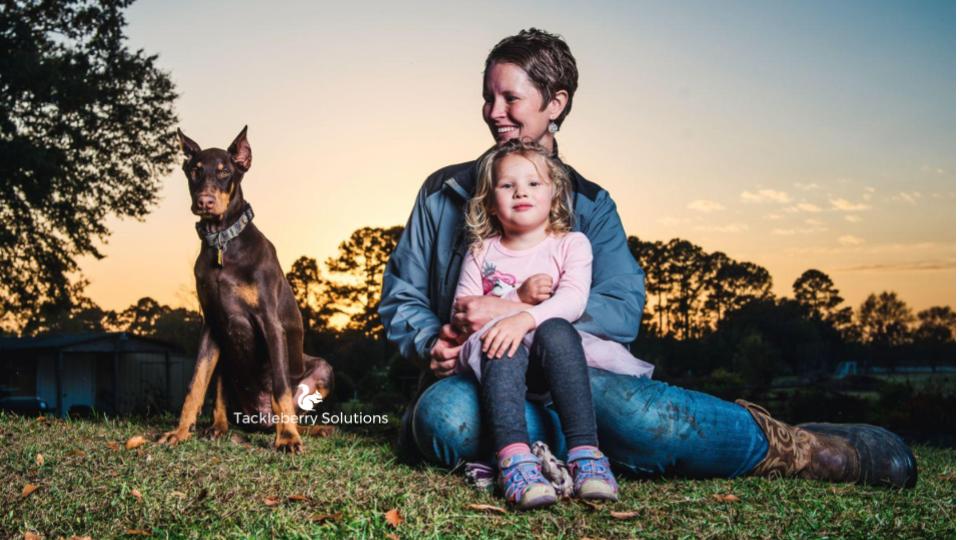
Not All Working Dogs Are the Same
Lately there has been a rise in online certifications and service vest sales. Some online certifications create a problem in sham certifications. This creates a risk to the public, handlers, and their animals. Never pass your dog off as a service fog or ESA canine if they are not highly trained specialized working dogs.
Furthermore, many folks overlap service teams with ESA (emotional support animals) and look to have their dogs ESA certified thinking it will grant privileges.
However, Emotional Support Animals are only granted two additional benefits:
- to fly in aircraft cabins
- to live in apartment/housing where dogs or particular breeds are otherwise restricted.
Sources
Online, as of 11/6/22
- https://newdogowners.com/service-dog-etiquette/
- https://www.theodysseyonline.com/service-dog-etiquette-plea-to-the-public
- https://www.tbbf.org/proper-service-dog-etiquette/
- https://theservicedogs.com/etiquette-tips-for-people-new-to-service-dogs/
- https://pawsofwar.org/service-dog-etiquette
- https://www.northwestbattlebuddies.org/2022/03/08/service-dogs-in-public/
- https://www.labradortraininghq.com/labrador-training/service-dog-etiquette/
- https://topdogtips.com/15-dog-etiquette-every-dog-owner-should-know/
Available Puppies
If you're in need of a high-quality service or protection dog. Or you would just like an excellent family pet, check out our available Tackleberry Solution's registered canines below. They are all looking for good homes to serve:
